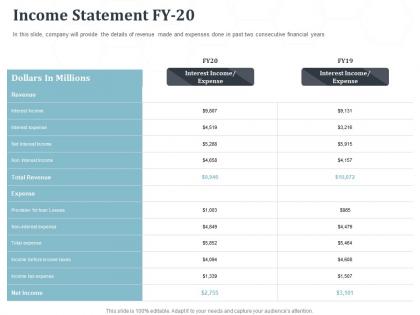Measuring The Good Life: Tracking Your Progress And Adjustments

Table of Contents
Defining Your Version of the "Good Life"
The "good life" is a highly personal concept. What brings one person joy might leave another indifferent. Defining your own version is the crucial first step in measuring your progress towards it. This means identifying your core personal values and setting goals aligned with them. Understanding your "defining happiness" is key.
- Identify your core values: What truly matters to you? Consider aspects like family, health, creativity, financial security, personal growth, adventure, spirituality, or contribution to society. These personal values will guide your goal setting.
- Set SMART goals: Once you've identified your values, translate them into specific, measurable, achievable, relevant, and time-bound (SMART) goals. Vague aspirations are unhelpful; concrete goals are essential for measuring the good life. For example, instead of "spend more time with family," aim for "have dinner with my family twice a week."
- Utilize visualization techniques: Consider using journaling or vision boards to clarify your vision of the good life. Writing down your thoughts and feelings, or creating a visual representation of your goals, can strengthen your commitment and help you stay focused.
- Examples of SMART goals:
- Increased family time: Schedule a weekly family game night.
- Improved physical fitness: Walk for 30 minutes, three times a week.
- Completing a creative project: Write 500 words of your novel every Sunday.
- Achieving financial independence: Save 10% of your income each month.
Tracking Your Progress: Key Metrics and Tools
Measuring the good life requires a data-driven approach. Tracking your progress allows you to see how far you've come and identify areas needing improvement. This involves using both quantitative and qualitative metrics.
- Quantitative metrics: These are easily measurable numbers, such as steps walked daily using a fitness tracker, hours spent on hobbies, money saved, or books read.
- Qualitative metrics: These are less tangible but equally important. They include journaling entries reflecting your emotional well-being, feedback from loved ones about your progress, or your overall sense of accomplishment.
- Utilize technology: Many apps and spreadsheets can help you track your progress. Consider using productivity trackers like Todoist or Asana, wellness apps like Calm or Headspace, or simply a spreadsheet to monitor your key metrics. Regular self-assessment tools are also beneficial.
- Regular self-reflection: Regular journaling is crucial for capturing your thoughts, feelings, and observations. This allows for a deeper understanding of your progress and helps identify patterns and challenges.
Making Adjustments: Course Correction and Flexibility
Measuring the good life isn't a linear journey; it's an iterative process. Life throws curveballs, and your priorities may shift over time. Flexibility and adaptability are key to maintaining momentum.
- Regular review: Schedule regular check-ins (weekly or monthly) to review your progress against your goals. This allows for timely adjustments. Re-evaluating progress is vital.
- Adjust your strategies: If you're not seeing the desired results, don't be afraid to adjust your strategies or even your goals. Experiment with different approaches and find what works best for you.
- Embrace experimentation: The path to a fulfilling life involves experimentation. Don't be afraid to try new things and adapt your approach as needed.
- Seek support: Don't hesitate to seek support from friends, family, a mentor, or a therapist if you're facing challenges. Having a support system can make a significant difference.
- Celebrate milestones: Acknowledge your achievements along the way. Celebrating milestones boosts motivation and keeps you focused on the bigger picture.
Overcoming Challenges and Setbacks
The pursuit of the good life isn't always smooth sailing. Burnout, unexpected life events, and setbacks are inevitable. Developing resilience and self-compassion is essential for navigating these challenges.
- Identify and address burnout: Recognize the signs of burnout (exhaustion, cynicism, reduced effectiveness) and take steps to address them. This might involve prioritizing self-care, adjusting your workload, or seeking professional help.
- Adapt to unexpected events: Life throws curveballs. Learn to adapt your plans and goals as needed, remaining flexible and resilient in the face of adversity.
- Practice self-compassion: Be kind to yourself during setbacks. Remember that progress isn't always linear, and it's okay to make mistakes.
Sustaining Your "Good Life" Journey
Measuring the good life is an ongoing process. The key takeaways are defining your personal values, setting SMART goals, using effective tracking methods, and adapting your strategies for sustained progress. Regular self-reflection and adjustments are crucial for navigating this journey. Remember, the "good life" is not a destination, but a continuous process of growth and refinement.
Start measuring the good life today! Download our free worksheet [link to worksheet] to help you define your values and create a personalized plan. By taking intentional steps towards a more fulfilling life, you'll experience a greater sense of purpose, well-being, and overall happiness. Embrace the journey, and enjoy the process of building your own unique version of the good life.

Featured Posts
-
 Veterinary Watchdog How Serious Are The Complaints
May 31, 2025
Veterinary Watchdog How Serious Are The Complaints
May 31, 2025 -
 The Impact Of Climate Change On Rainfall Patterns In Western Massachusetts
May 31, 2025
The Impact Of Climate Change On Rainfall Patterns In Western Massachusetts
May 31, 2025 -
 Become A Skywarn Storm Spotter Spring Training With Tom Atkins
May 31, 2025
Become A Skywarn Storm Spotter Spring Training With Tom Atkins
May 31, 2025 -
 Millions In Losses Executive Office365 Accounts Compromised
May 31, 2025
Millions In Losses Executive Office365 Accounts Compromised
May 31, 2025 -
 Bailey Urges Stronger Eu Trade Links To Counter Brexit Damage
May 31, 2025
Bailey Urges Stronger Eu Trade Links To Counter Brexit Damage
May 31, 2025
